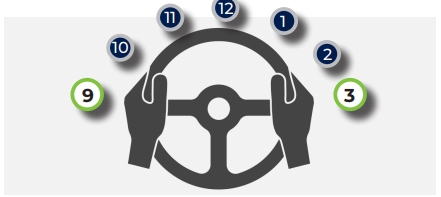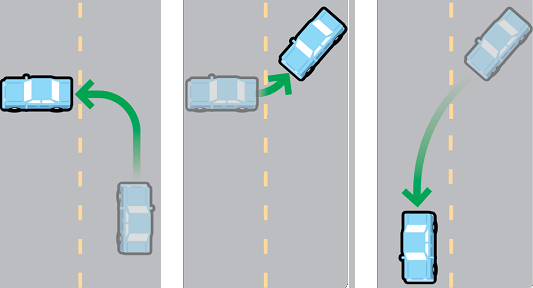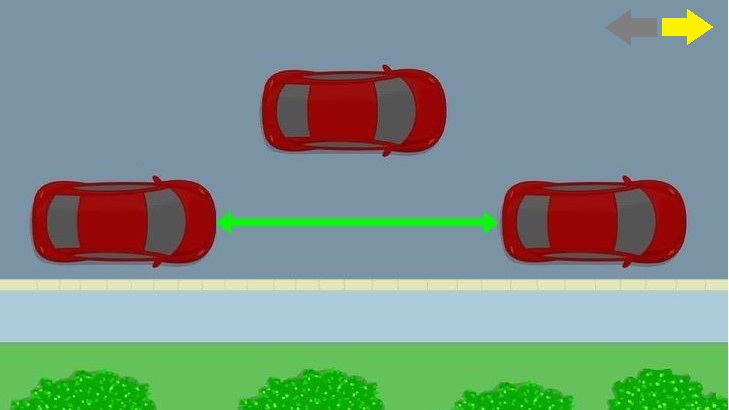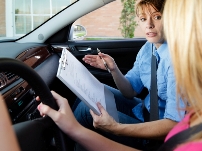Our Blog
A motorist should always give a proper signal when turning, changing lanes, stopping, or slowing down. A motorist should always use the vehicle’s turn signals. A motorist should put on the turn signal at least 100 feet before turning and be sure to cancel the signal after making a turn. Not doing so could mislead other motorists. (N.J.S.A. 39:4-126)
New Jersey law requires a motorist to know the correct hand signals for stopping and turning, which are standard in all states. To give a hand signal, a motorist should put his/her arm well out of the vehicle so that it is visible to other motorists.
• Stop or slowing down: hand and arm downward, palm facing to the rear.
• Right turn: hand and arm upward.
• Left turn: hand and arm straight out.
Another signal is the horn, which is a warning signal. It calls attention to what the motorist is doing. Motorists may sound the horn when passing another vehicle when not in a business or residential zone. Under normal conditions, the horn should be able to be heard for at least 200 feet. (N.J.S.A. 39:3-69) Only emergency vehicles may use sirens, whistles, or bells.
Bicyclists, skateboarders, and inline skaters also use the hand signals noted above. In addition, instead of extending the left hand and arm upward to indicate a right turn, bicyclists, skateboarders, and inline skaters may extend the right hand and arm straight out to indicate a right turn.
A motorist’s grip on the steering wheel is important. The steering wheel can be thought of as the face of a clock. For normal driving, a motorist should grip the steering wheel by the outside rim at the 9 and 3 o’clock positions, keeping his/her thumbs along the face of the wheel. Gripping the steering wheel as described diminishes the risk of hand, wrist, or arm injury if the air bag is deployed. A motorist should never turn the wheel while gripping it from the inside of the rim, hand facing inward. The steering wheel should be held firmly but not too tight, as steady as possible as the vehicle’s speed increases. Both hands should always be kept on the wheel, except when shifting gears or giving hand signals.
The motorist should keep the vehicle in the center of the lane that it is traveling. On a two-lane road with traffic coming toward the vehicle, the motorist should keep to the right. Once a motorist feels how the vehicle reacts to steering, he/she will be ready to practice turning, parking and other movements. It takes practice to get the feel of steering. If the vehicle has anti-lock brakes (ABS), the motorist should never violently jerk the steering wheel while braking.
HAND-OVER-HAND STEERING
Hand-over-hand steering permits a motorist to make steering adjustments ranging from very minor up to a half turn of the wheel, while keeping both hands on the wheel. If turning through a slight curve, both hands will typically retain their original grip on the wheel, making only slight finger or wrist adjustments as necessary to maintain the path of travel. However, when moving through a turn, the hands may move as much as 165 degrees. The motorist initiates the turn by pushing the wheel up from the 9 or 3 o’clock position toward 12 o’clock, and the opposite hand crosses over and down to the 9 or 3 o’clock position, as appropriate to provide input or to stabilize steering. The original hand then returns to the original start position of 9 or 3 o’clock. The process is reversed to return to a straight path, or the wheel can be allowed to slip through the fingers (controlled slipping) to straighten when coming out of a turn, while both hands are always on the wheel to adjust as necessary. Hand-over-hand steering is particularly well suited for precision maneuvers, steering through curves, intersection entry and exit, and skid recovery.
When turning a vehicle around, a motorist should start from the right edge of the road. Choose a safe spot with good visibility in both directions. If there is no other traffic, the motorist should signal left and move forward slowly while turning the steering wheel to the left. The vehicle should be stopped several inches from the left curb or street edge. The motorist should then back up slowly while turning the steering wheel to the right, stopping several inches from the right curb or street edge. The motorist should next move the vehicle forward while turning the steering wheel to the left. Finally, the motorist should straighten the vehicle’s wheels as it faces in the direction, he/she wants to go. This is a complete 3-Point (or K) Turn. A new motorist will be required to make this turn during the MVC’s road test.
Parallel parking is the most common type of parking on city streets. A motorist must be able to parallel park a vehicle to pass the MVC’s road test. This takes the most practice for a new motorist. A motorist should practice often, in an empty parking lot at first. Flags or markers 25 feet apart may be used to show where the other vehicles would be. If a motorist hits the flags or markers, he/she is not ready for parking between real vehicles and should keep practicing. The slower and smoother a motorist backs into a parking space, the easier it is to park. To properly parallel park, a motorist should:
• Find a parking space that is large enough to fit the vehicle.
• Signal for a stop and signal to the right to alert motorists that the vehicle will back up to the right.
• Pull up alongside (parallel) about two to four feet from the vehicle in front.
• Turn and check to see that the way is clear behind the vehicle before backing up.
• Turn his/her body to look out the rear window of the vehicle. Begin backing up slowly for about two feet and turn the steering wheel all the way to the right.
• When the front of the vehicle has cleared the rear bumper of the vehicle in front, stop and check the angle.
• Make sure the right back wheel has not hit the curb.
• Turn the steering wheel all the way to the left while beginning to back up slowly.
• Make sure the vehicle can clear its back bumper.
• When the vehicle is in line, stop. Be sure not to hit the vehicle in back.
• Turn the vehicle’s wheels straight, and drive to the center of the parking space. The vehicle’s tires should be no more than six inches from the curb.






